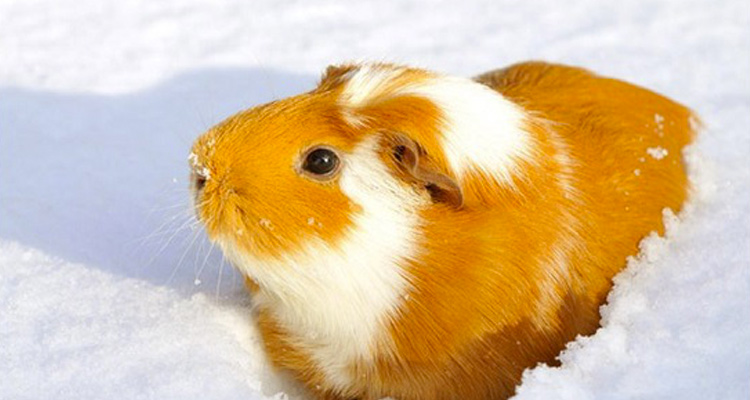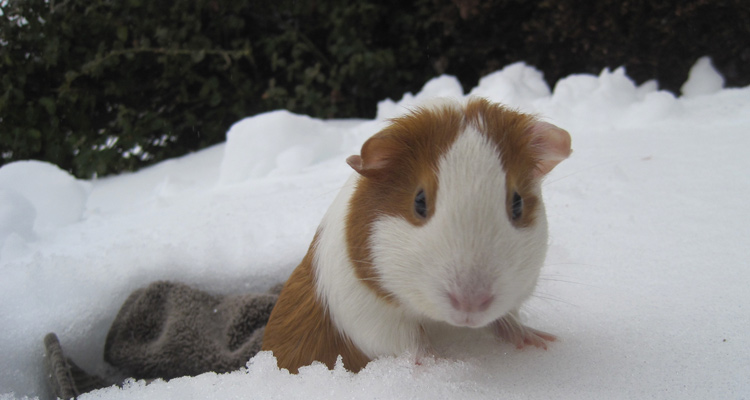You may have heard of avalanche rescue dogs, but in a recent study from the Rodent Avalanche Technologies Society (R.A.T.S.), based in Athabasca, Alberta, a new mammal has been identified as highly effective in stressful rescue environments that has other mammals chasing their tails—a beloved family pet to millions of middle schoolers around the country, the Guinea pig.

A Guinea pig at home in the snow.
This diminutive rodent’s effectiveness in avalanche rescues has taken the snow-safety world by storm. With a sense of smell that can detect human saliva from as far away as 15 meters, Guinea pigs are able to identify the location of a buried skier or rider to within feet. And once an initial search has been completed, research suggests that Cavia porcellus, which were first domesticated as early as 5000 BC, can be taught to use eco-location through a series of high-pitched chirps to hone their search even further.
“It is truly amazing to watch these little rodents in action,” says Herbert Caviidae, director of R.A.T.S. “We might even see a time when the average backcountry user will bring their own furry friend out of the cage and into the backcountry as their own personal safety precaution.”
And the proof is in the pudding. Stanly Cochon, a graduate student at the University of Phoenix Online, was buried in a slide on February 5 during a backcountry trip near Banff, Alberta, and claims he has a rodent rescue to thank for his life.
“At first I thought, I know God can take on many forms, but a Guinea pig? That was not what I was expecting to see in the last moments of life,” says Cochon. “But then more light rushed in as the rescue team caught up with my little furry savior.”

Guinea pigs are given blankets before and after searches so they can stay warm and limber for their duties during rescues.
Guinea pig avalanche rescue is still in its infancy, so it is unlikely that avalanche victims will come into contact with these little creatures in the near future. R.A.T.S. does have plans to expand their program throughout the U.S. and Canada, however, and they estimate that by winter 2018, it will be relatively commonplace to see a Guinea pig rescue in the backcountry.
“I look forward to the day when our program goes international,” says Caviidae. “At the moment, the only real concern is making sure we keep males and females separate. We don’t want thousands of Guinea pig babies before there’s a market.”
Despite this promising new program—and the relative affordability and availability of these rodents—R.A.T.S. still advises backcountry users to continue to carry traditional safety gear, including but not limited to beacon, shovel, probe and avalanche airbag, into the backcountry, and to be prepared with proper avalanche education. As of the current season, there just may not be a Guinea pig waiting to pull you out of an avalanche.











Related posts:
Colorado and Utah Avalanche Centers to launch “Go Before You Go” campaign
Nor’easter Set to Wallop New England
Special investigation finds Protect Our Winters, Punxsutawney Phil in cahoots
How Romp Skis crafted the ultimate one-quiver backcountry tool